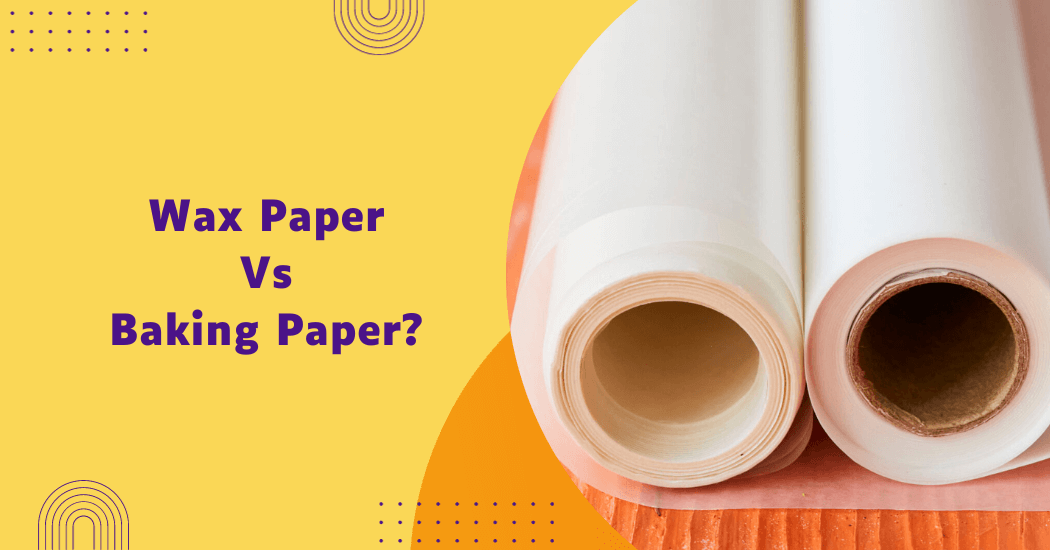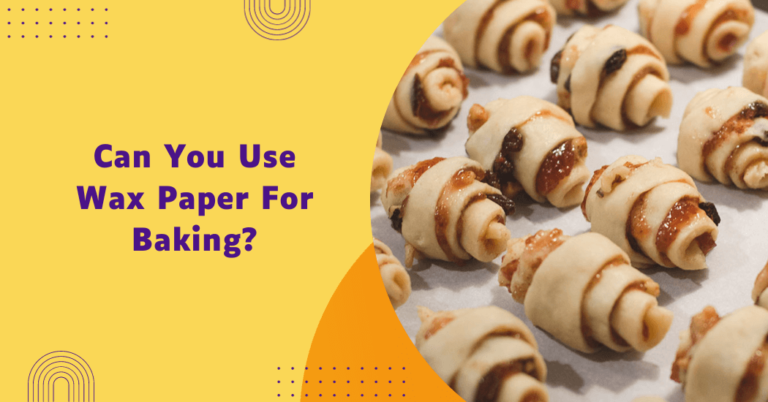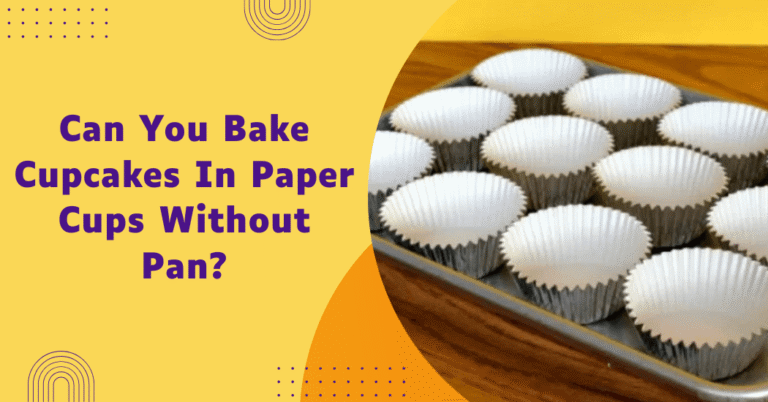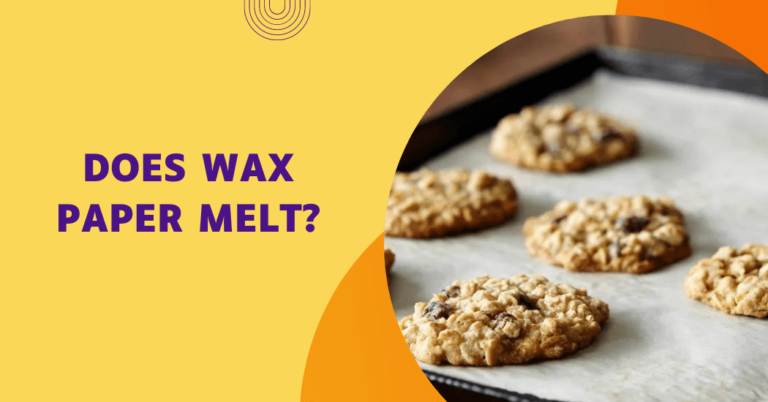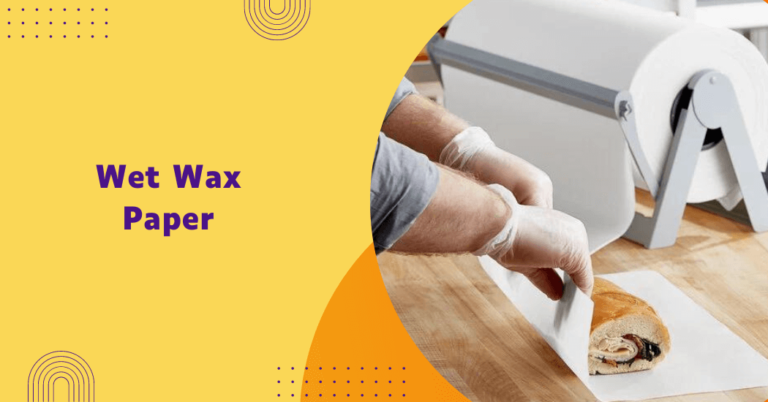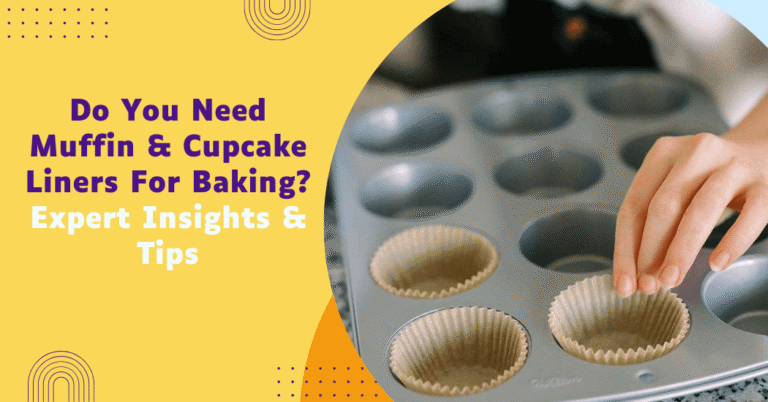Wax paper vs baking paper? And when to use each?
When it comes to baking and cooking, the type of paper you use can greatly influence the outcome of your culinary endeavors. Two commonly used types in the kitchen are wax paper and baking paper, also known as parchment paper.
While they may seem interchangeable at first glance, these two types of paper have distinct properties and uses that make them unique.
In this exploration, we delve into the key differentiators between these two kitchen essentials, shedding light on their uses, benefits and the scenarios in which one might be favored over the other.
Join us on a journey to unravel the nuances of wax paper versus baking paper and discover how these seemingly simple kitchen companions play pivotal roles in the pursuit of culinary excellence.
Wax paper
Wax paper, as the name suggests, is a type of paper that has been coated with wax. This coating makes it resistant to moisture and grease, making it an ideal choice for many kitchen tasks.
It is commonly made from thin sheets of paper that have been coated on both sides with paraffin wax. The wax layer helps prevent food from sticking to the paper, making it an ideal choice for use when wrapping foods such as sandwiches or lining baking trays.
Common uses of wax paper
Let’s take a closer look at some of the common uses of wax paper:
- Food Wrapping: Wax paper is commonly used for wrapping foods such as sandwiches, cheese and meats to keep them fresh and prevent sticking.
- Lining Baking Trays: The non-stick properties of wax paper make it a great choice for lining baking trays when making cookies, brownies or other baked goods.
- Crafting: Useful for various crafting activities, such as making candles or protecting surfaces during art projects.
- Microwaving Foods: As wax paper is resistant to moisture and grease, it can be used to cover foods in the microwave, preventing splatters and keeping food moist.
- Surface Protection: This can be used as a protective barrier for surfaces during messy food preparation or as a placemat.
Pros and cons of using wax paper
Pros of wax paper
- Non-Stick Surface: Wax paper’s wax coating makes it resistant to moisture and grease, preventing food from sticking and making cleanup easier.
- Microwave Safe: It can be used in the microwave without releasing harmful chemicals, making it suitable for reheating certain foods.
- Moisture Resistance: It provides a barrier against moisture, which is beneficial for wrapping foods like sandwiches or moist baked goods.
- Cost-Effective: Generally, wax paper is more affordable than some alternative food wrapping options.
Cons of wax paper
- Limited Heat Resistance: The wax paper should not be used in the oven or on direct heat sources as it can melt and potentially cause a fire.
- Limited to Cold Foods: It is not suitable for use with hot or greasy foods, as it can lose its integrity and potentially transfer wax onto the food.
- Not Eco-Friendly: Due to its wax coating, wax paper is not biodegradable, making it less environmentally friendly compared to other options like parchment paper.
Baking Paper
Baking paper also known as parchment paper, is a type of kitchen paper that has been treated with silicone. This makes it non-stick and heat-resistant, allowing it to withstand high temperatures without burning or melting.
Unlike wax paper, which is coated on both sides, baking paper is only coated on one side. This allows the paper to absorb excess moisture from foods without becoming soggy, making it perfect for use in baking and roasting.
Common uses of baking paper
- Baking: As the name suggests, baking paper is most commonly used for baking. Its non-stick properties make it ideal for lining cake pans, cookie sheets and other bakeware.
- Roasting Vegetables: Baking paper can be used to line roasting pans, preventing vegetables from sticking and making cleanup easier.
- Steaming: Baking paper can be folded and used as a pouch for steaming fish or other foods in the oven or on the grill.
- Lining Pans: Acts as a liner for baking pans, making cleanup easier and extending the life of bakeware.
- Making Parchment Packets: This versatile paper can also be used to create parchment packets for cooking meats, fish or vegetables in the oven, locking in flavors and moisture.
- Freezing Foods: Baking paper can be used to wrap and freeze foods, preventing sticking and freezer burn.
Pros and cons of using baking paper
Pros of baking paper
- Heat Resistance: Baking paper can withstand high temperatures without melting, making it ideal for use in baking and roasting.
- Non-Stick Surface: Its silicone coating provides a non-stick surface, making it easy to remove baked goods from pans and trays.
- Reusable: Some brands of baking paper are reusable, cutting down on waste and saving money in the long run.
- Eco-Friendly: Unlike wax paper, baking paper is biodegradable and can be composted after use.
Cons of baking paper
- Cost: Baking paper tends to be more expensive than other options like wax paper or aluminum foil.
- Limited Uses: Its main purpose is for baking, so it may not be as versatile as other food wrapping options.
- Not Microwave Safe: Some brands of baking paper are not suitable for use in the microwave, as they may release harmful chemicals when heated. It is essential to check the packaging before using it in the microwave.
In conclusion, both wax paper and baking paper have their unique uses and benefits and understanding when to use each can greatly improve your cooking and baking experience. Whether for crafting, cooking or baking, these papers are essential tools in any kitchen.
When should you use wax paper versus baking paper?
As we can see, both wax paper and baking paper have their unique uses in the kitchen. But when should you opt for one over the other?
Here are some general guidelines to help you decide:
- Wax paper: If you need a moisture and grease-resistant surface, such as when wrapping sandwiches or lining baking trays for baked goods that don’t require high temperatures, wax paper is a suitable choice.
- Baking paper: When working with high temperatures, whether in the oven or on the grill, baking paper is the way to go. Its non-stick properties and heat resistance make it a perfect fit for all your baking needs.
- Both: Of course, there are some scenarios where both wax paper and baking paper can be used interchangeably, depending on personal preference or availability. For example, both can be used to line pans when making brownies or as a protective barrier for messy food prep.
Ultimately, the type of paper you use in the kitchen can greatly impact the success and ease of your cooking and baking endeavors.
By understanding the differences between wax paper and baking paper, you can make informed decisions on which one to use in various scenarios to achieve delicious results every time.
Price comparison between wax and baking paper
When it comes to price, wax paper is generally more affordable than baking paper. A roll of wax paper can cost anywhere from $4 to $10 and it usually contains more sheets compared to a roll of baking paper, which can cost between $5 to $15.
However, some brands of baking paper offer reusable options, making them more cost-effective in the long run. Ultimately, the price difference may not be significant and personal preference and intended use can also play a role in determining which paper to purchase.
Wax paper vs Baking paper
Here’s a comparison table between wax paper and baking paper:
| Feature | Wax Paper | Baking Paper |
|---|---|---|
| Material Composition | Coated with a thin layer of wax. | Coated with a layer of silicone. |
| Non-Stick Properties | Limited non-stick properties. | Excellent non-stick properties. |
| Heat Resistance | Lower heat resistance (generally up to 350°F or 175°C) | Heat-resistant and can withstand high temperatures (up to around 450°F or 232°C). |
| Use in Baking | Not ideal for baking due to low heat resistance. | Ideal for baking; can be used in ovens. |
| Grease Resistance | Resistant to grease and moisture. | Resistant to grease and moisture. |
| Reusability | Not designed for multiple uses. | Can be used multiple times. |
| Environmental Impact | May not be as environmentally friendly due to the wax coating | Generally considered more environmentally friendly, especially if unbleached and chlorine-free options are chosen |
| Applications | Often used for no-bake recipes, as a barrier in food packaging or for art and craft projects. | Commonly used for baking, roasting and as a non-stick surface for various cooking purposes. |
Keep in mind that the specific properties of these papers can vary among different brands, so it’s always a good idea to check the manufacturer’s instructions for best results.
Tips for choosing the right paper for a task
- Consider the Heat: If you are working with high temperatures, always opt for baking paper over wax paper.
- Think about Moisture and Grease: For wet or greasy foods such as cookies or roasted vegetables, using baking paper can help prevent sticking and make cleanup easier.
- Pay Attention to Labeling: Always check the packaging to determine if the paper is suitable for use in the oven or microwave.
- Consider Cost and Reusability: If cost is a concern, consider reusable options or compare prices between different brands before purchasing.
- Evaluate Your Needs: Think about what you will be using the paper for and choose accordingly. For example, if you primarily need it for baking, investing in a good quality baking paper may be worth it. But if you need something more versatile, wax paper may be the better option.
By keeping these tips in mind, you can choose the right paper for each task and make your cooking and baking experiences even more enjoyable.
So go ahead and grab that roll of wax or baking paper, knowing that you have made an informed decision based on your needs.
FAQs – Wax Paper vs Baking Paper
Can you use wax paper instead of baking paper?
While wax paper and baking paper have similar appearances, they are not interchangeable due to their different heat resistances. Wax paper is coated with a thin layer of wax, which can melt or even ignite if exposed to high temperatures.
Therefore, it should not be used as a substitute for baking paper in the oven, where it can potentially catch fire or melt onto your food.
However, for no-heat applications such as wrapping food for storage or use as a makeshift pastry bag, wax paper can be used. Always check the intended application and heat resistance before substituting one for the other.
Are parchment paper and baking paper the same thing?
Yes, parchment paper and baking paper are the same thing. They both refer to a type of non-stick paper that has been coated with silicone and is used for cooking and baking.
However, in some regions, they may be labeled differently or have slight variations in thickness or size. It is always a good idea to check the product’s specifications before purchasing to ensure it meets your needs.
What is the main difference between wax paper and baking paper?
Wax paper is coated with a thin layer of wax on both sides, making it non-stick and moisture-resistant. Baking paper, on the other hand, is coated with a layer of silicone, providing a heat-resistant, non-stick surface.
Final Words
In conclusion, the choice between wax paper and baking paper depends on the specific culinary task at hand. While both serve as effective non-stick options, wax paper is best suited for cold or room temperature tasks like wrapping sandwiches or lining surfaces during food preparation.
On the other hand, baking paper, with its heat-resistant properties, is the go-to choice for oven-related activities such as baking cookies, roasting vegetables or lining cake pans.
Understanding the distinct characteristics of each paper will help you make an informed decision based on your cooking or baking needs. Ultimately, whether it’s wax paper or baking paper, selecting the right tool enhances the overall success and enjoyment of your culinary endeavors.
